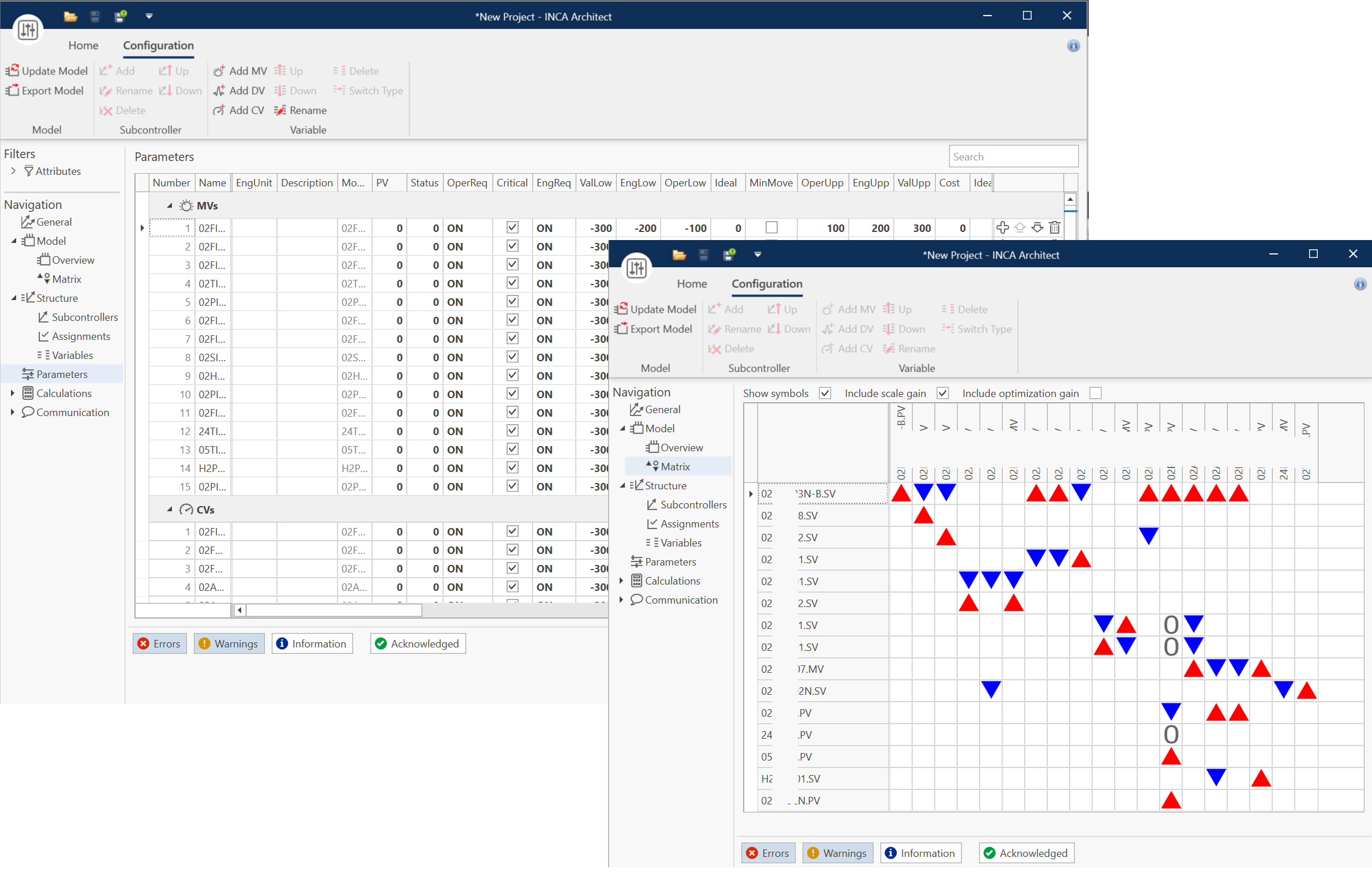Once installed, INCA MPC has proven to generate sustained benefits for operating companies. To configure INCA MPC, you need to take several steps: choose the targets and constraints, determine the controller structure, set up the communication between the controller and the process, and tune the controller… After the first version of the controller, updates will be needed later. These updates range from tweaking a tuning parameter to adding extra variables to the controller and updating the targets. All these steps must be executed carefully. The iterations involved in finding mistakes slow down the project’s progress.
In this blog, we describe how INCA Architect, a new member of the INCA Suite of control solutions, helps you get your INCA MPC running smoothly and in no time.

From Model to Configuration
At the highest level, an MPC configuration specifies which variables are manipulated (MVs), which ones are controlled (CVs) and which ones are measured to improve the prediction of the process behavior (DVs). Depending on the unit that is controlled, the number of MVs goes up to several dozen and twice that number for CVs.
All it takes for INCA Architect to create an initial MPC configuration is the model you identified. INCA Architect will use the information in the model to set up the first configuration. For example, the model outputs will automatically become CVs in the configuration. The name, description and engineering units for each variable are automatically taken from the model. Of course, these values can still be changed if preferred.
Mass Communication
For every variable in an MPC configuration, you need to specify where to get all input values from and where to write all output values to. This quickly adds up to having to configure multiple hundreds of lines of I/O mappings, an enervating and time-consuming job.
Fortunately, there are always certain recurring patterns in these lines, and INCA Architect allows you to define “recipes” that define these patterns in only a few lines. INCA Architect will use these recipes and the information already in the configuration to generate the I/O mappings, saving a tremendous amount of time. The recipes are set up flexible enough to allow for the occasional exception to the patterns.
Continuous Integration
INCA Architect continuously overwatches the whole configuration while you build it. It will automatically update the I/O definitions according to the recipes when you add, remove or rename a variable.
For each variable, about 50 parameters influence how the controller treats the variable. INCA Architect picks sensible defaults where it can. These defaults can be easily recognized so that you do not lose track of which parameters you may still need to consider.
An MPC configuration needs to satisfy a lot of constraints for it to work correctly. For example, the lower limit of a CV should not be larger than its upper limit (unless either of these limits has been switched off). It is a painstaking job for the engineer to always keep an eye on this, but no longer with INCA Architect. INCA Architect is aware of all these constraints and immediately identifies any violations.
Version control
Multiple engineers might be working simultaneously on the MPC configuration. For example, one engineer can be commissioning the controller in the plant while another one is adding an extra feature to it in the office. INCA Architect makes it easy to merge configurations. When a configuration is updated with a download from the online controller, the differences between the two versions are highlighted. You can choose which values you want to update and which values to keep unchanged. This is not limited to parameter values but also allows you to track adding or renaming of a variable.
INCA Architect: MPC configuration made easy!
With INCA Architect, making an MPC configuration is simpler and quicker than ever by:
- Automation: Automatically generate a configuration from a model
- Simplicity: Add or remove variables by the click of a button
- Integration: I/O definitions kept in sync with the configuration
- Consistency: Keep track of changes made in different configurations
- Reliability: Problems are automatically solved, or the user is pointed to them.
Make sure your INCA full development license is up to date, so that you too can configure INCA MPC more efficiently than ever.
Request a live demo
This option will give answers to all your specific questions. In a 30-minute call, one of our experts will explain the capabilities of the tool.



